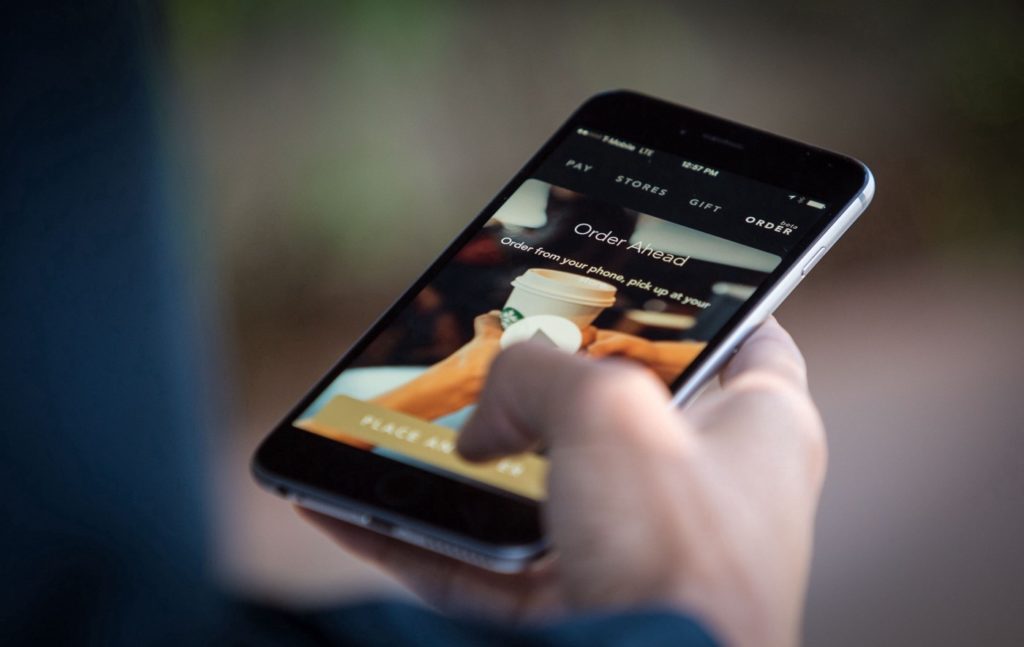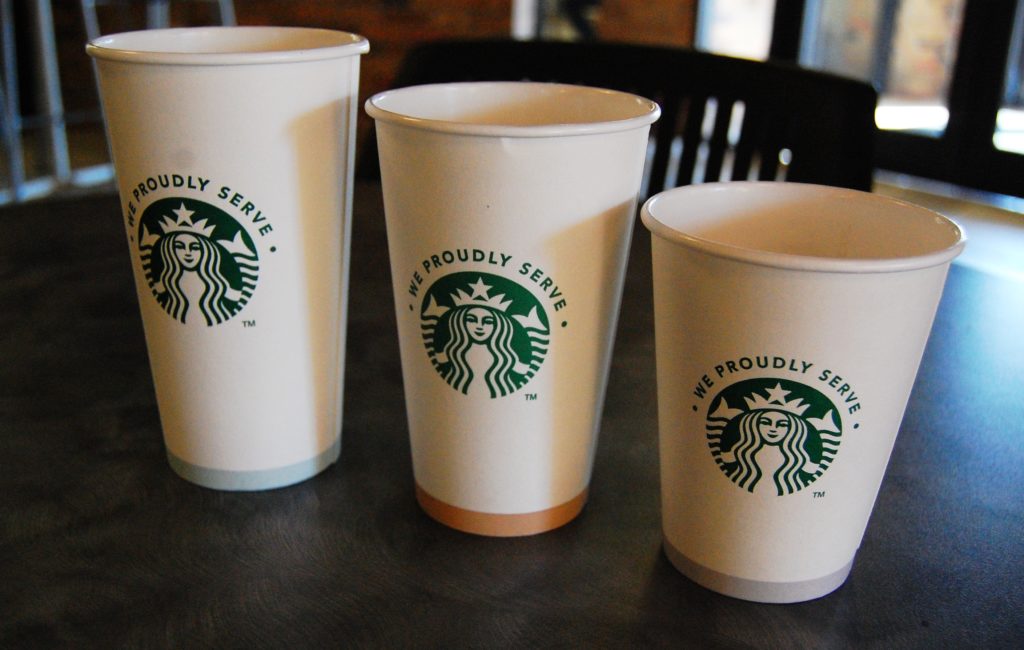One of the most important reasons for Starbucks ‘ success is that it is considered by its audience to be a kind of “third home“-a place for complete relaxation, escapism.
The perfect alternative to coffee within the home and that rush between work meetings.
Howard Schultz, the man who contributed significantly to the company’s increased profits and its internationalization, in his book “From the ground up: a journey to reimagine the promise of America,” emphasizes the new responsibilities that managers, realities and citizens share in today’s society.
And he emphasizes how this responsibility led him to create a company with a social conscience.
Indeed, the Starbucks brand has always had a significant role and relationship with people that is not just about the coffee product.
Shultz will say:
“I was taken by the power that tasting a simple cup of coffee can have to connect people and create community.”
Let us now dwell on that connecting people and creating community.
You do this not simply by writing the name on customers’ glasses to “tune in” to them as many people trivialize, but by creating a complete unforgettable experience.
Building on Schultz’s book, integrating it with Jennifer Clinehens ‘ “Choice Hacking: How to use psychology and behavioral science to create an experience that sings” and some of her articles, I would like to repurpose some arguments for you to make your own and partially replicate in the cultural sector.
Let’s look at them together.
1. Relevant and personalized messages
We have seen it.
By asking for a customer’s name and writing it/stamping it on the cup, Starbucks drives love for its brand through a more personalized experience.
But why?
According to a study published in the journal Brain Research, a key factor in “tuning in” is when people hear their own name.
The answer lies in a psychological principle known as the Cocktail Party Effect. Discovered in the 1950s by scientist Colin Cherry, it states.
people focus on the information most relevant to them.
Not convinced? Take a look at the following statistics on how personalization can bring real value to your bottom line:
- 73 percent of consumers prefer to do business with brands that use personal information to make their shopping experience more relevant(Digital Trends);
- 86 percent of consumers say that personalization plays a role in their purchasing decisions(Infosys);
- 45 percent of online shoppers are more likely to shop on a site that offers personalized recommendations(Invesp);
- 80 percent of consumers like it when emails contain recommended products or services based on previous purchases(Listrak);
- 40 percent of consumers buy more from those who personalize the shopping experience across channels(Monetate).
Always Monetate, in its Personalization Development Study in late 2019, shared the ROI (return on investment) of personalized marketing:
- 93 percent of companies with an “advanced personalization strategy” for marketing saw revenue growth;
- entities with an ROI of 2x or more of that customization made up at least 20 percent of their marketing budget;
- brands that had the highest personalization ROI (3x or more) focused on loyalty as their main KPI.
The message is clear: If you want to get your visitors to take action, you need to create as personalized an experience as possible and invest in marketing.
2. Peak-end principle
Economist Daniel Kahneman found that our brains cannot remember everything, so they use mental shortcuts, called heuristics, to identify what is important.
One of the most important heuristics is emotion: the more intense and recent the feelings, the more memorable the experience.
These findings are the foundation of the psychological principle known as the Peak-end principle:
people judge an experience by how they felt at its most intense point and at its end, not by the average of each moment of the experience.
And this is true whether the experience was good or bad.
Let’s take Starbucks. How does it apply Peak-end?
Eliminating the two biggest pain points: waiting to pay and waiting for coffee.
Through the “order in advance” feature, Starbucks’ digital solution allows customers to skip both the payment line and the coffee pickup line. So now, what were two painful moments in the customer journey are completely avoided in favor of a fast and seamless experience.

A Starbucks store manager, Jesse Wenkoff-White, described it this way:
“It is fun to have a conversation with customers and teach them how to place a mobile order.
We can have fairly long lines in the morning and it’s a great option for clients who want to rush in and out if they are running late.
I’ve had so many people tell me how convenient and easy it is. Our customers who use it and absolutely love it.”
Clear no?
3. Bait effect
The decoy effect describes how price comparisons between products influence choice.
When there are only two options, and their price is “fair,” people make decisions based on personal preference.
But if there is a third choice, which many times is overpriced compared to the first two options, it changes the way people consider all options: the third option is a “bait” choice.
The purpose of baiting is to change the perception of other options, not to sell.
How does Starbucks apply the lure effect?
Their classic three-tier structure is a clear signal.
Starbucks uses this strategic pricing technique so that customers choose the size that provides the most profit for the company.

Guess which of these glasses he gains the most from?
Which one do you want to sell instead?
4. Loss warning
First identified by Nobel laureate Daniel Kahneman, loss aversion is a psychological principle that emphasizes how
the person will be willing to do anything to avoid “losing.”
This is because, the psychological pain of loss is twice as powerful as the pleasure of winning.
Precisely because it is so powerful, loss aversion features heavily in cognitive psychology and decision theory.
And it is also one of the most effective tactics for inducing customers to buy (the other being Social Proof).
Loss aversion has also been called FOMO – Fear of missing out – the fear of being left out of exciting events and missing out on fun.
Chances are you’ve heard about it from reading some article about the overuse of social networks and from the desire to stay continually connected to what others are doing).
But how does Starbucks take advantage of loss aversion?
It is famous for its limited-edition beverages, such as Pumpkin Spice Milk and Frappuccino, which create devoted fans of the brand, even to the point of becoming cultural landmarks: the festive red Christmas cups, for example, herald the start of the holiday season in the United States.
On the other hand, what makes mugs a cultural landmark is the creation of a sense of FOMO for people who have not gotten their hands on a limited-availability beverage.
It drives people into the store and makes them feel like they are part of something exclusive and special.
How do you drop these psychological strategies within your museum?
Let’s start with personalization.
In a recent study, Accenture found three personalization tactics that have a direct effect on buying behavior:
- Use name: 56% of customers would prefer to buy from someone who knows them by name;
- know the past: 65 percent of customers prefer to buy from those who “know their purchasing history.”
- know what they are interested in: 58% of customers prefer to buy from those who recommend options based on their past purchases.
Here’s where, to personalize your visitor’s experience, you might think from the start about:
- the main contact information (first name, last name, cell phone, email) of those who visit your institution;
- “marking” what he saw over time. If too challenging, at least know when he had his first visit;
- ask what they would prefer to know about your museum and send emails over time broken down by interest and specific content (if you are a small institution with no staff stay on the first two points).
To do all this you need to have a specific CRM (in this article we tell you about Active Campaign, what is in our opinion the best service).
Regarding the Peak-end Principle, the basic things to do are essentially two.
On the one hand, incentivize booking (and perhaps payment, even discounted) in advance. This would also help capture your visitor’s contact information.
On the other hand, give continuity once the visit is over (I devoted a specific chapter on this topic in my book Every Damn Museum).

Only when this is done can you think about working on thelure effect (differentiating the type of tickets, not so much on the basis of age but on the basis of spending ability) andloss aversion (specific events for loyal customers willing to spend more money).
If you would like to share your opinion or learn more about it we are talking about it here:

